Mengajarkan Anda untuk meningkatkan market collector backtest sumber data kustom
Penulis:Kebaikan, Dibuat: 2020-06-06 08:53:02, Diperbarui: 2023-11-01 20:28:58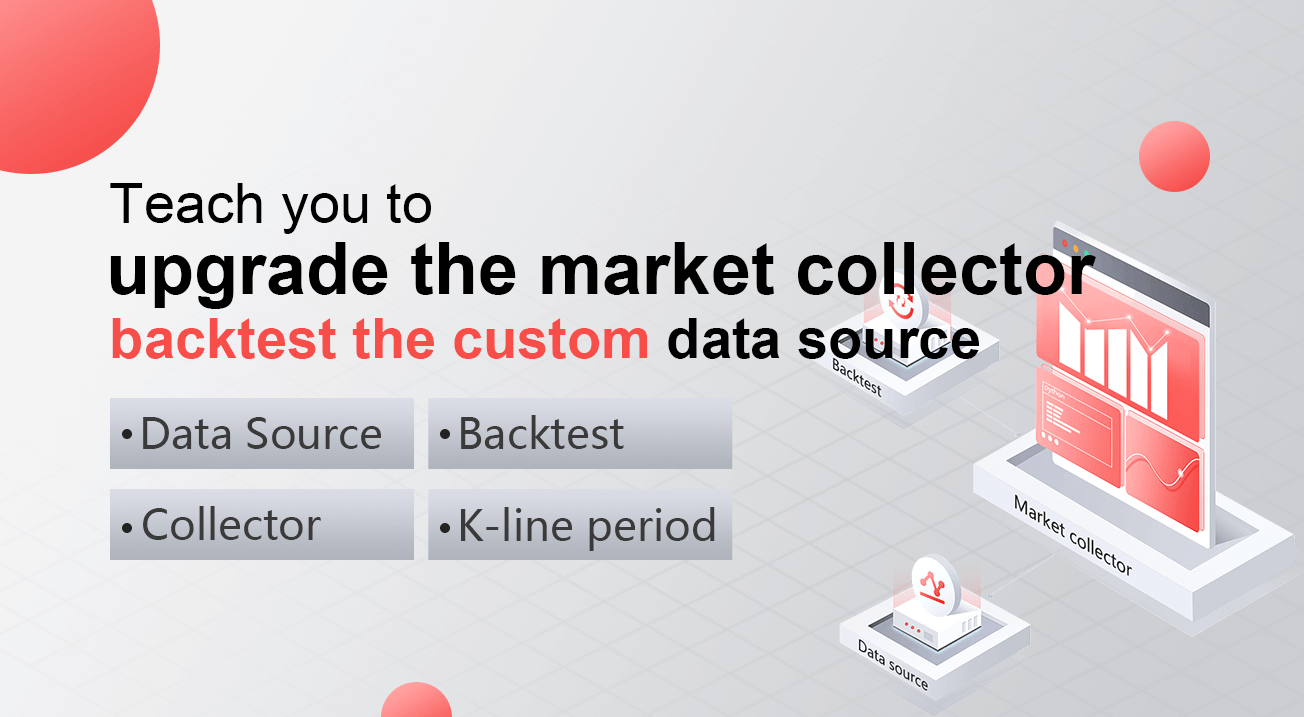
Artikel sebelumnyaMengajarkan Anda untuk menerapkan pasar kutipan kolektorKami telah menerapkan program robot yang mengumpulkan penawaran pasar bersama-sama.
Bagaimana menggunakan data pasar setelah kita mengumpulkannya? itu akan digunakan untuk sistem backtest. Bergantung pada fungsi sumber data kustom dari sistem backtest platform FMZ, kita dapat secara langsung menggunakan data yang dikumpulkan sebagai sumber data dari sistem backtest, sehingga kita dapat membiarkan sistem backtest digunakan di pasar mana pun di mana kita ingin backtest data historis.
Oleh karena itu, kita dapat memberikan
Bersiaplah
Ini berbeda dari pekerjaan persiapan di artikel sebelumnya. terakhir kali adalah program docker yang berjalan di komputer MAC lokal saya, menginstal database mongodb untuk memulai layanan database. kali ini kami mengubah lingkungan operasi menjadi VPS dan menggunakan server Alibaba Cloud Linux untuk menjalankan serangkaian program kami.
- Pangkalan data Mongodb
Seperti di artikel sebelumnya, kita perlu menginstal database mongodb pada perangkat di mana program market collector sedang berjalan dan memulai layanan. pada dasarnya sama dengan menginstal mongodb pada komputer MAC. ada banyak tutorial di Internet, Anda dapat google itu, sangat sederhana.
- Menginstal Python 3
Program ini menggunakan python3, perhatikan penggunaan beberapa pustaka python, jika tidak diinstal, Anda perlu menginstalnya terlebih dahulu.
Pymongo http Urllib
- Docker
FMZ docker berjalan akan cukup.
Mengubah Market Quote Collector
Pengumpul kutipan pasar adalah ini:https://www.fmz.com/strategy/199120(RecordsCollector) strategi.
Mari kita membuat beberapa modifikasi untuk itu:
Sebelum program memasuki loop sementara untuk mengumpulkan data, sebuah perpustakaan multi-threaded digunakan, dan eksekusi bersamaan memulai layanan untuk memantau permintaan data dari sistem backtest platform FMZ.
RecordsCollector (upgrade untuk menyediakan fungsi sumber data khusus)
import _thread
import pymongo
import json
import math
from http.server import HTTPServer, BaseHTTPRequestHandler
from urllib.parse import parse_qs, urlparse
def url2Dict(url):
query = urlparse(url).query
params = parse_qs(query)
result = {key: params[key][0] for key in params}
return result
class Provider(BaseHTTPRequestHandler):
def do_GET(self):
try:
self.send_response(200)
self.send_header("Content-type", "application/json")
self.end_headers()
dictParam = url2Dict(self.path)
Log("The custom data source service receives the request, self.path:", self.path, "query parameter:", dictParam)
# At present, the backtesting system can only select the exchange name from the list. When adding a custom data source, set it to Binance, that is: Binance
exName = exchange.GetName()
# Note that period is the bottom K-line period
tabName = "%s_%s" % ("records", int(int(dictParam["period"]) / 1000))
priceRatio = math.pow(10, int(dictParam["round"]))
amountRatio = math.pow(10, int(dictParam["vround"]))
fromTS = int(dictParam["from"]) * int(1000)
toTS = int(dictParam["to"]) * int(1000)
# Connect to the database
Log("Connect to the database service to obtain data, the database:", exName, "table:", tabName)
myDBClient = pymongo.MongoClient("mongodb://localhost:27017")
ex_DB = myDBClient[exName]
exRecords = ex_DB[tabName]
# Request data
data = {
"schema" : ["time", "open", "high", "low", "close", "vol"],
"data" : []
}
# Construct query condition: greater than a certain value{'age': {'$gt': 20}} Less than a certain value{'age': {'$lt': 20}}
dbQuery = {"$and":[{'Time': {'$gt': fromTS}}, {'Time': {'$lt': toTS}}]}
Log("Query conditions:", dbQuery, "Number of inquiries:", exRecords.find(dbQuery).count(), "Total number of databases:", exRecords.find().count())
for x in exRecords.find(dbQuery).sort("Time"):
# Need to process data accuracy according to request parameters round and vround
bar = [x["Time"], int(x["Open"] * priceRatio), int(x["High"] * priceRatio), int(x["Low"] * priceRatio), int(x["Close"] * priceRatio), int(x["Volume"] * amountRatio)]
data["data"].append(bar)
Log("data:", data, "Respond to backtest system requests.")
# Write data reply
self.wfile.write(json.dumps(data).encode())
except BaseException as e:
Log("Provider do_GET error, e:", e)
def createServer(host):
try:
server = HTTPServer(host, Provider)
Log("Starting server, listen at: %s:%s" % host)
server.serve_forever()
except BaseException as e:
Log("createServer error, e:", e)
raise Exception("stop")
def main():
LogReset(1)
exName = exchange.GetName()
period = exchange.GetPeriod()
Log("collect", exName, "Exchange K-line data,", "K line cycle:", period, "second")
# Connect to the database service, service address mongodb://127.0.0.1:27017 See the settings of mongodb installed on the server
Log("Connect to the mongodb service of the hosting device, mongodb://localhost:27017")
myDBClient = pymongo.MongoClient("mongodb://localhost:27017")
# Create a database
ex_DB = myDBClient[exName]
# Print the current database table
collist = ex_DB.list_collection_names()
Log("mongodb ", exName, " collist:", collist)
# Check if the table is deleted
arrDropNames = json.loads(dropNames)
if isinstance(arrDropNames, list):
for i in range(len(arrDropNames)):
dropName = arrDropNames[i]
if isinstance(dropName, str):
if not dropName in collist:
continue
tab = ex_DB[dropName]
Log("dropName:", dropName, "delete:", dropName)
ret = tab.drop()
collist = ex_DB.list_collection_names()
if dropName in collist:
Log(dropName, "failed to delete")
else :
Log(dropName, "successfully deleted")
# Start a thread to provide a custom data source service
try:
# _thread.start_new_thread(createServer, (("localhost", 9090), )) # local computer test
_thread.start_new_thread(createServer, (("0.0.0.0", 9090), )) # Test on VPS server
Log("Open the custom data source service thread", "#FF0000")
except BaseException as e:
Log("Failed to start the custom data source service!")
Log("Error message:", e)
raise Exception("stop")
# Create the records table
ex_DB_Records = ex_DB["%s_%d" % ("records", period)]
Log("Start collecting", exName, "K-line data", "cycle:", period, "Open (create) the database table:", "%s_%d" % ("records", period), "#FF0000")
preBarTime = 0
index = 1
while True:
r = _C(exchange.GetRecords)
if len(r) < 2:
Sleep(1000)
continue
if preBarTime == 0:
# Write all BAR data for the first time
for i in range(len(r) - 1):
bar = r[i]
# Write line by line, you need to determine whether the data already exists in the current database table, based on timestamp detection, if there is the data, then skip, if not write in
retQuery = ex_DB_Records.find({"Time": bar["Time"]})
if retQuery.count() > 0:
continue
# Write bar to the database table
ex_DB_Records.insert_one({"High": bar["High"], "Low": bar["Low"], "Open": bar["Open"], "Close": bar["Close"], "Time": bar["Time"], "Volume": bar["Volume"]})
index += 1
preBarTime = r[-1]["Time"]
elif preBarTime != r[-1]["Time"]:
bar = r[-2]
# Check before writing data, whether the data already exists, based on time stamp detection
retQuery = ex_DB_Records.find({"Time": bar["Time"]})
if retQuery.count() > 0:
continue
ex_DB_Records.insert_one({"High": bar["High"], "Low": bar["Low"], "Open": bar["Open"], "Close": bar["Close"], "Time": bar["Time"], "Volume": bar["Volume"]})
index += 1
preBarTime = r[-1]["Time"]
LogStatus(_D(), "preBarTime:", preBarTime, "_D(preBarTime):", _D(preBarTime/1000), "index:", index)
# adding drawing display
ext.PlotRecords(r, "%s_%d" % ("records", period))
Sleep(10000)
Tes
Mengkonfigurasi robot
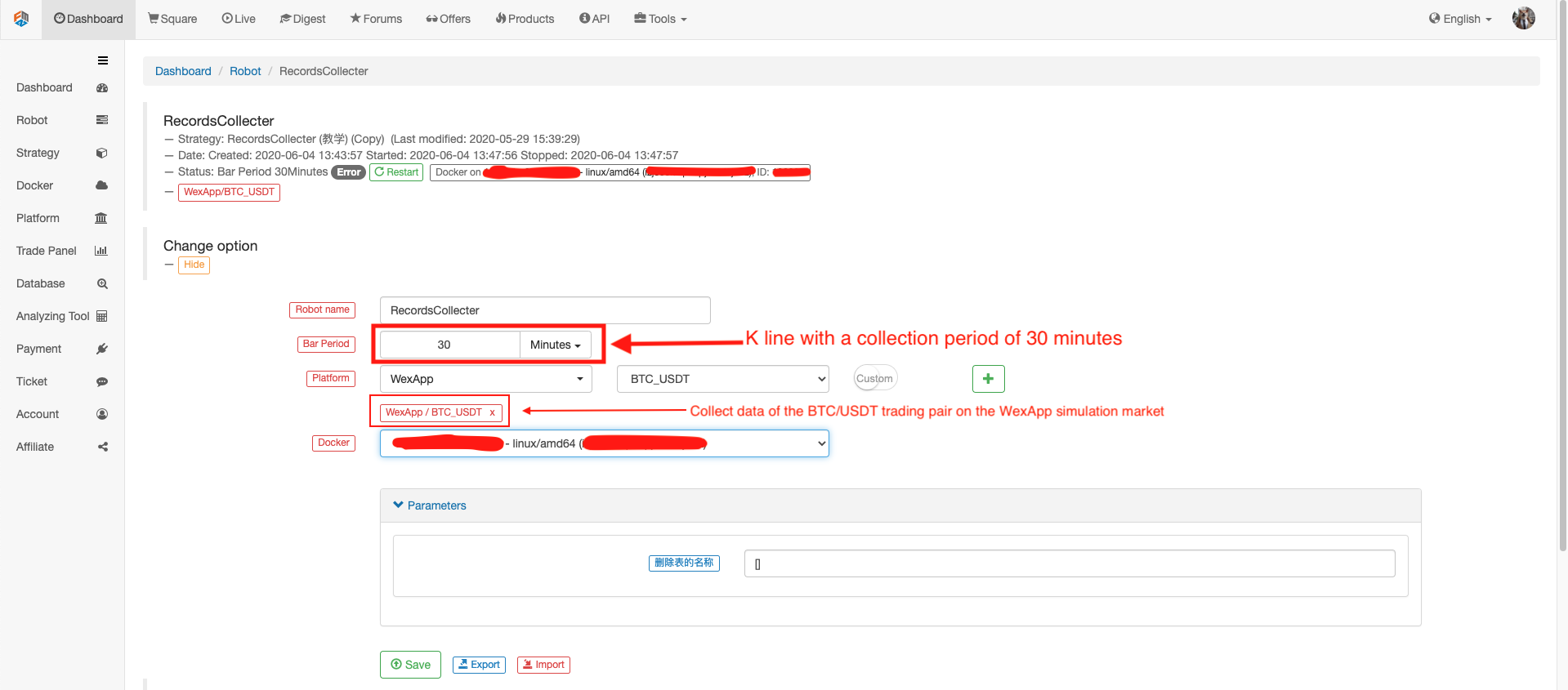
Jalankan robot, jalankan kolektor penawaran pasar.
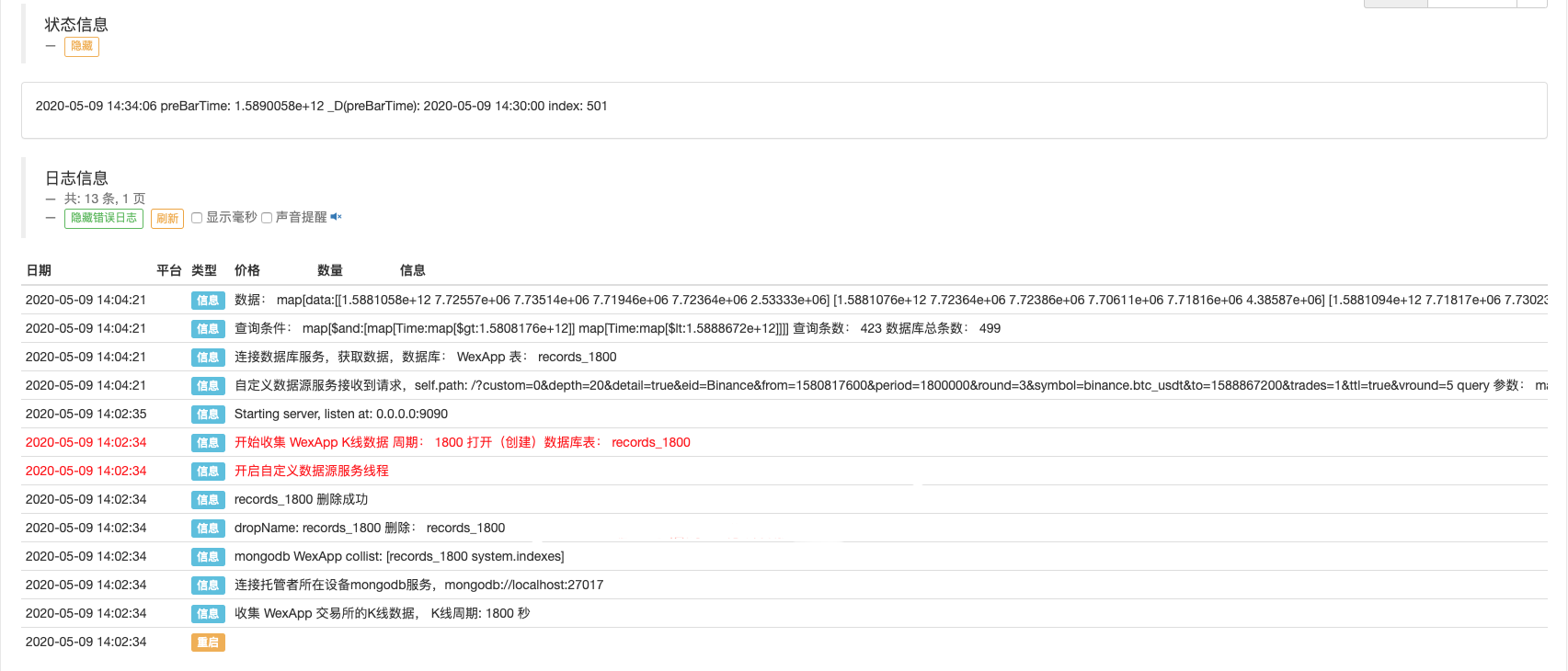
Buka strategi uji untuk backtest. Misalnya:
function main() {
Log(exchange.GetRecords())
Log(exchange.GetRecords())
Log(exchange.GetRecords())
Log(exchange.GetRecords())
Log(exchange.GetRecords())
Log(exchange.GetRecords())
Log(exchange.GetRecords().length)
}
Mengkonfigurasi opsi backtest, mengatur pertukaran ke Binance karena sumber data kustom sementara belum dapat merumuskan nama pertukaran sendiri, Anda hanya dapat meminjam salah satu konfigurasi pertukaran dalam daftar, backtest menunjukkan bahwa Binance, yang sebenarnya Ini adalah data pasar simulasi WexApp.

Bandingkan apakah grafik yang dihasilkan oleh sistem backtest berdasarkan pengumpul kutipan pasar sebagai sumber data kustom sama dengan grafik K-line 1 jam di halaman pertukaran wexApp.
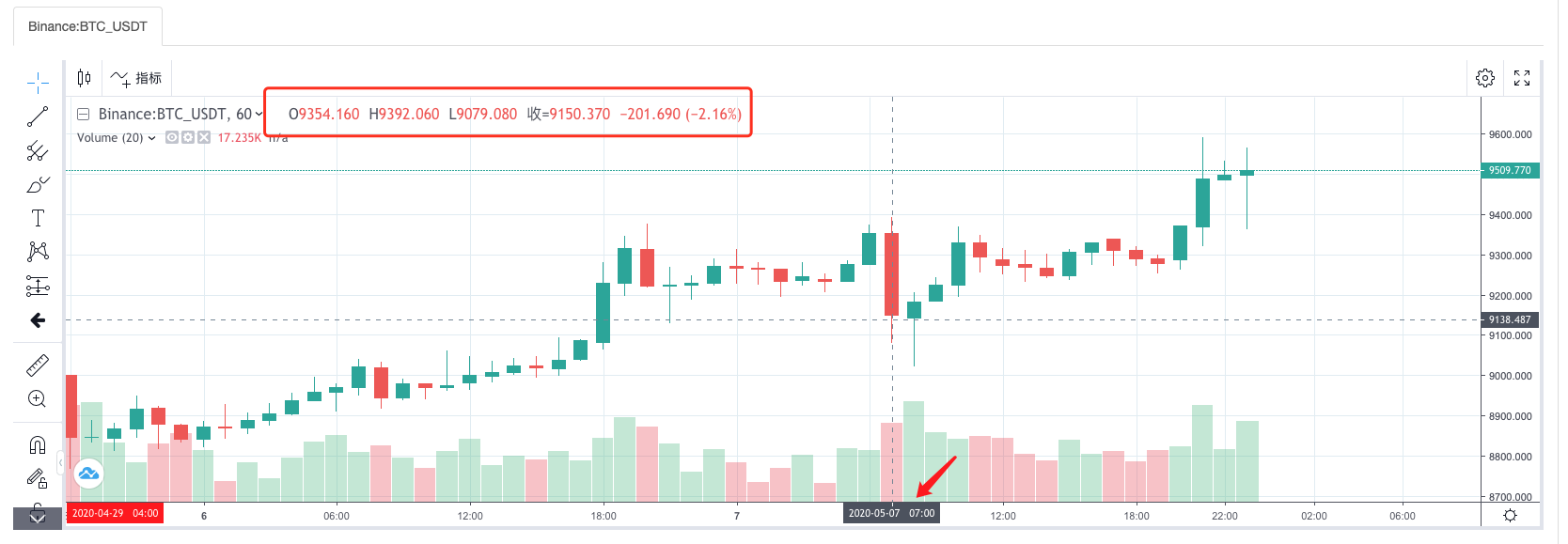
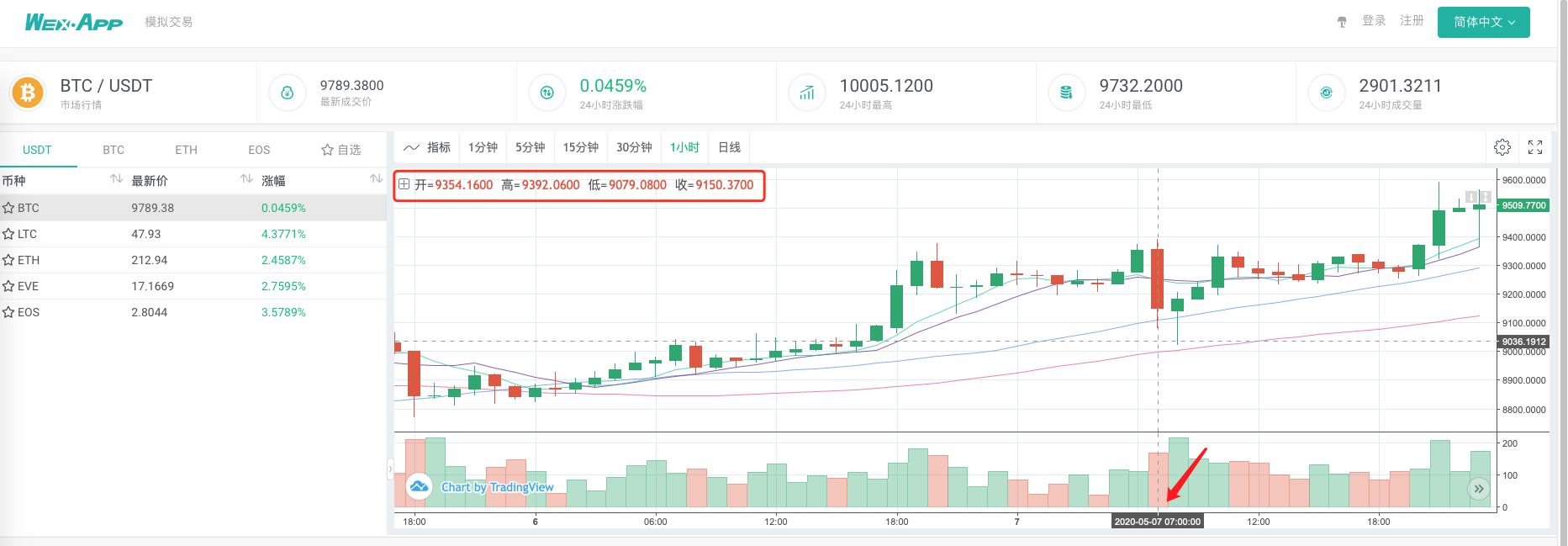
Dengan cara ini, robot di VPS dapat mengumpulkan data K-line sendiri, dan kita dapat mendapatkan data yang dikumpulkan kapan saja dan backtest langsung di sistem backtest.
Anda dapat terus memperluas, misalnya, mencoba tingkat nyata backtest sumber data kustom, dan multi-varietas, multi-pasar pengumpulan data dan fungsi lainnya.
- Pengantar ke Lead-Lag Arbitrage dalam Cryptocurrency (2)
- Penjelasan tentang suite Lead-Lag dalam mata uang digital (2)
- Pembahasan Penerimaan Sinyal Eksternal Platform FMZ: Solusi Lengkap untuk Penerimaan Sinyal dengan Layanan Http Terbina dalam Strategi
- FMZ platform eksplorasi penerimaan sinyal eksternal: strategi built-in https layanan solusi lengkap untuk penerimaan sinyal
- Pengantar ke Lead-Lag Arbitrage dalam Cryptocurrency (1)
- Penjelasan tentang suite Lead-Lag dalam mata uang digital (1)
- Diskusi tentang Penerimaan Sinyal Eksternal dari Platform FMZ: API Terluas VS Strategi Layanan HTTP Terintegrasi
- FMZ Platform Eksternal Signal Reception: Extension API vs Strategi Layanan HTTP Terbentuk
- Diskusi tentang Metode Pengujian Strategi Berdasarkan Generator Random Ticker
- Metode pengujian strategi berdasarkan generator pasar acak
- Fitur Baru FMZ Quant: Gunakan Fungsi _Serve untuk Membuat Layanan HTTP dengan Mudah
- Evaluasi kurva modal backtest menggunakan alat "pyfolio"
- FMZ Quantified My Language - Grafik antarmuka
- Versi Python dari Commodity Futures Intertemporal Bollinger Hedge Strategy (Hanya untuk tujuan studi)
- Interface dengan robot FMZ menggunakan indikator "Tradingview"
- FMZ Kuantitas Bahasa Melayu (My) - Parameter Kelas Perdagangan Bahasa Melayu
- Komoditas "futures and spots" Arbitrage Chart Berdasarkan Data Fundamental FMZ
- Sistem backtest frekuensi tinggi berdasarkan setiap transaksi dan cacat backtest K-line
- Versi Python dari strategi lindung nilai intertemporal berjangka komoditas
- Beberapa Pikiran tentang Logika Perdagangan Berjangka Mata Uang Crypto
- Alat analisis yang ditingkatkan berdasarkan pengembangan tata bahasa Alpha101
- Cacat dari sistem reverse osmosis frekuensi tinggi dan reverse osmosis linear
- Penjelasan mekanisme backtest tingkat simulasi FMZ
- Cara terbaik untuk menginstal dan meningkatkan FMZ docker pada Linux VPS
- Komoditas Futures R-Breaker Strategy
- Pikirkan Logika Trading Futures Mata Uang Digital
- Mengajarkan Anda untuk menerapkan pasar kutipan kolektor
- Versi Python Komoditas Futures Moving Average Strategi
- Pasar kutipan kolektor upgrade lagi
- Upgrade prosesor - mendukung impor file format CSV untuk menyediakan sumber data yang disesuaikan
- Strategi Trading Frekuensi Tinggi Komoditas Berjangka yang ditulis oleh C++